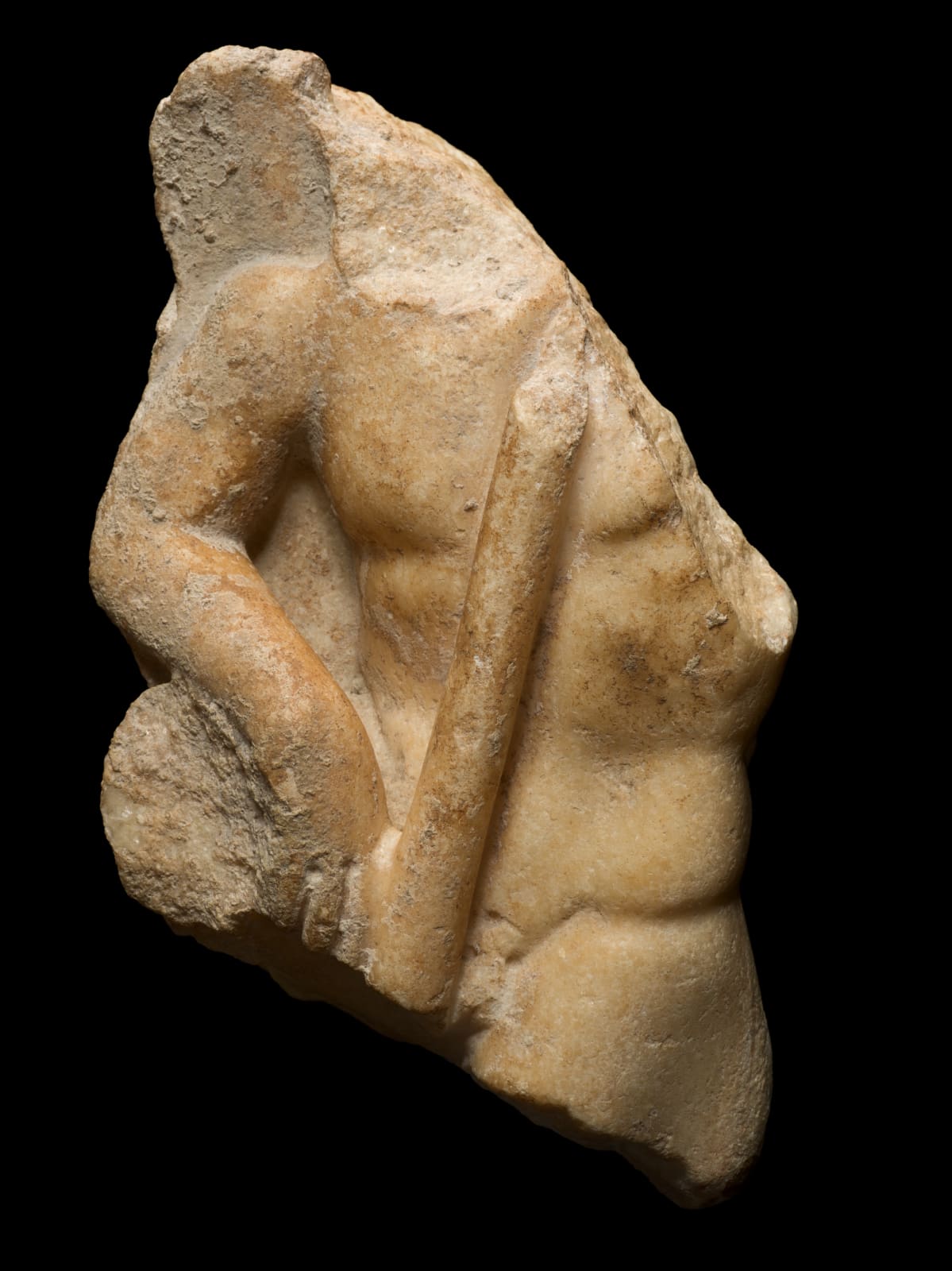MALE TORSO, Roman Empire, 2nd/3rd Century A.D.
dolomitic marble
19 x 11.6 x 7.5 cm
7 1/2 x 4 1/2 x 3 in
7 1/2 x 4 1/2 x 3 in
Further images
This muscular male torso probably comes from a larger relief, which would have decorated the front part of a sarcophagus. It likely represents the figure of a satyr, standing, with...
This muscular male torso probably comes from a larger relief, which would have decorated the front part of a sarcophagus. It likely represents the figure of a satyr, standing, with the right arm resting on the raised leg. A staff crosses his body, and there are still some traces of the beard on the upper chest. This position resembles that of the colossal sculpture of Poseidon exhibited at the Lateran Museums in Rome, a marble Roman copy of a Greek original dating from the 4th Century BC.
The original surface is very well preserved, and it carries all the qualities of a long provenance history. This powerful sculpture was is fact originally part of the collection of Charles Callahan Perkins (1823-1886), one of the first North American art critics. Mr. Perkins, after living across Europe, taught the history of Greek and Roman sculpture in Boston, and was one of the first donors to the Museum of Fine Arts - donating several artworks through the years. The present sculpture was in fact gifted to the MFA in 1876 and formed part of the permanent collection until 2015.
According to the Museum of Fine Arts Boston, Scientific Analysis of the marble was conducted with X-Ray Diffraction and determined to be Dolomitic. Reference: Harvard Lab No. HI215: Isotope ratios - delta13C +3.35 / delta18O -3.23, Attribution - Thasos-Cape Vathy, Justification - Dolomitic by XRD.
The original surface is very well preserved, and it carries all the qualities of a long provenance history. This powerful sculpture was is fact originally part of the collection of Charles Callahan Perkins (1823-1886), one of the first North American art critics. Mr. Perkins, after living across Europe, taught the history of Greek and Roman sculpture in Boston, and was one of the first donors to the Museum of Fine Arts - donating several artworks through the years. The present sculpture was in fact gifted to the MFA in 1876 and formed part of the permanent collection until 2015.
According to the Museum of Fine Arts Boston, Scientific Analysis of the marble was conducted with X-Ray Diffraction and determined to be Dolomitic. Reference: Harvard Lab No. HI215: Isotope ratios - delta13C +3.35 / delta18O -3.23, Attribution - Thasos-Cape Vathy, Justification - Dolomitic by XRD.
Provenance
Charles Callahan Perkins (1823-1886) Private Collection, Boston
Gifted to the Boston Museum of Fine Arts, on 1st January 1876, inv. no. 76.749
Deaccessioned on 24th September 2015
Publications
Mary B. Comstock, Cornelius Clarkson, Sculpture in Stone: The Greek, Roman and
Etruscan Collections of the Museum of Fine Arts, Boston, 1976, item 257
Art Loss Register ref. S00220484






